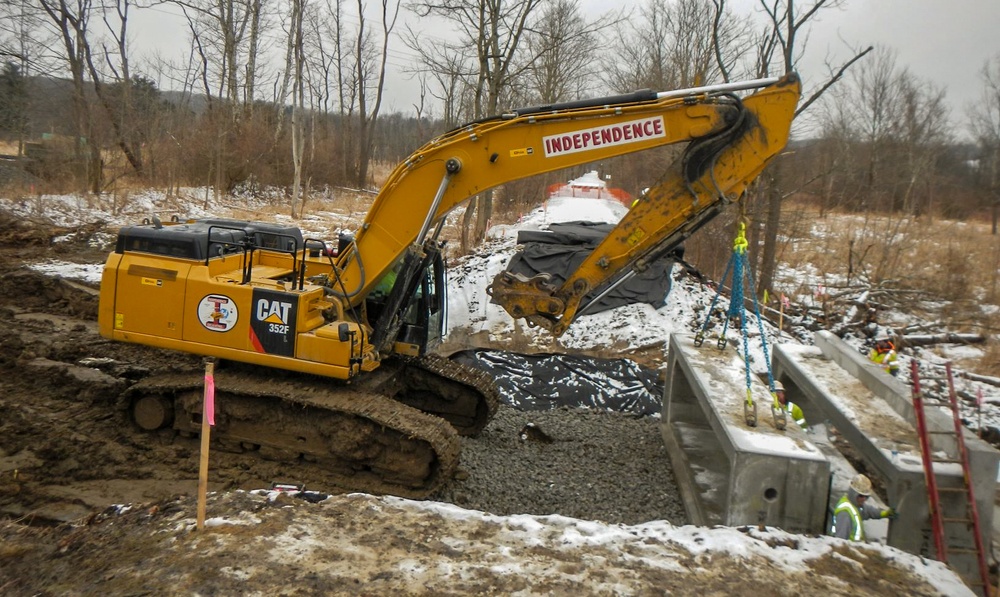Achieve Success With Culvert Installation: Finest Practices Disclosed
In this conversation, we will check out important strategies, suggestions, and standards that can considerably affect the end result of culvert installations - Road construction. Recognizing these key variables is paramount in ensuring the architectural honesty and efficiency of culverts, making it imperative for professionals and fanatics alike to understand these fundamental concepts.
Correct Material Option

Plastic culverts are light-weight, corrosion-resistant, and affordable, making them a popular option for numerous culvert setups. Inevitably, picking the appropriate material is vital to guarantee the culvert system operates effectively and has a long solution life (Road construction).
Website Prep Work Tips
Efficient website preparation is necessary for the successful installation of culverts, ensuring proper assimilation with the surrounding atmosphere and long-lasting functionality. Prior to starting the installment process, it is critical to perform a detailed site evaluation to establish the ideal size, type, and positioning of the culvert. Cleaning the area of any type of debris, plant life, or blockages is the very first step in site prep work. This makes certain a tidy and level surface area for the culvert to be installed.
Following, the soil problems should be evaluated to assess the security and load-bearing capacity of the ground. Relying on the dirt kind, added steps such as compaction or support may be necessary to stop settling or shifting of the culvert in time. Correct drain considerations need to additionally be thought about to stop water accumulation around the culvert, which can lead to disintegration or architectural damage.
Last but not least, establishing correct accessibility to the website for construction tools and guaranteeing conformity with any governing demands are vital facets of website prep work. By complying with these site preparation suggestions, the installation of culverts can be carried out successfully and effectively, promoting the longevity and functionality of the culvert system.
Setup Methods

First of all, it is crucial to precisely measure resource and note the area where the culvert will be installed. The trench needs to be dug to the appropriate deepness and size, taking right into account the size and type of culvert being mounted.
Correct positioning is crucial for the functionality and long life of the culvert. By following these installment techniques diligently, the culvert will be effectively installed, contributing to the total success of the task.
Maintenance Guidelines
After finishing the cautious installment of culverts adhering to appropriate methods, adherence to maintenance standards is critical to ensure their durability and capability. Inspections should include examining for sediment build-up, erosion around the culvert sides, and any kind of signs of deterioration or corrosion.
Furthermore, maintaining appropriate slope and alignment of the culvert is important for reliable water flow and to stop prospective obstructing. Road construction. Any kind of greenery near the culvert should be managed to avoid origin breach and obstructions. In locations susceptible to freezing temperature levels, applying wintertime upkeep practices such as ensuring correct water drainage to prevent ice accumulation is vital
Routine upkeep not just prolongs the lifespan of culverts yet likewise guarantees they web operate efficiently in taking care of water flow, decreasing the danger of damages to framework and surrounding locations.
Troubleshooting Common Issues
Addressing common problems that might emerge with culverts calls for a methodical method and careful analysis of the underlying reasons. One regular trouble encountered is blockages within the culvert, typically triggered by debris build-up or sediment build-up. To troubleshoot this concern, normal assessments and maintenance are necessary to make certain proper functioning. Furthermore, inappropriate installment causing misalignment or insufficient incline can result in water flow disruptions or also architectural damage. By evaluating the culvert alignment and incline frequently, prospective problems can be identified and dealt with quickly.

Conclusion
To conclude, accomplishing success with culvert installation needs careful consideration of material choice, thorough site preparation, correct installation methods, and normal upkeep. By adhering to ideal techniques and troubleshooting usual problems, the stability and functionality of culverts can be ensured. It is necessary to follow guidelines and recommendations to avoid any type of potential concerns and ensure the longevity of the culvert system.